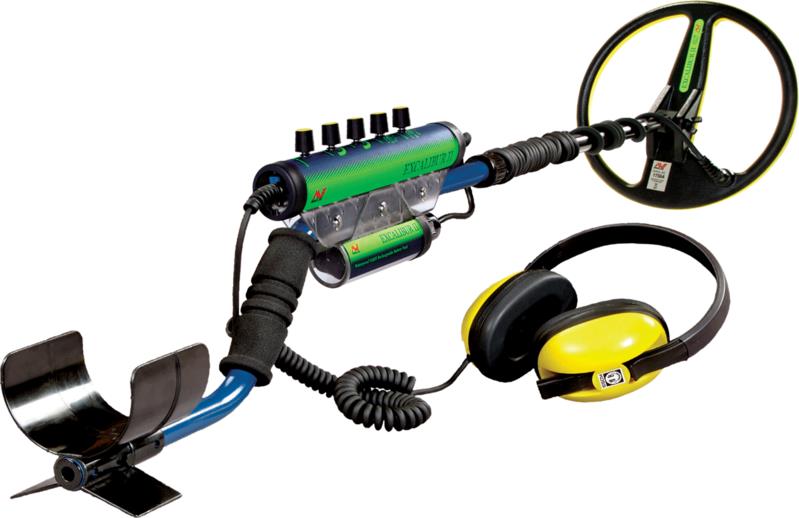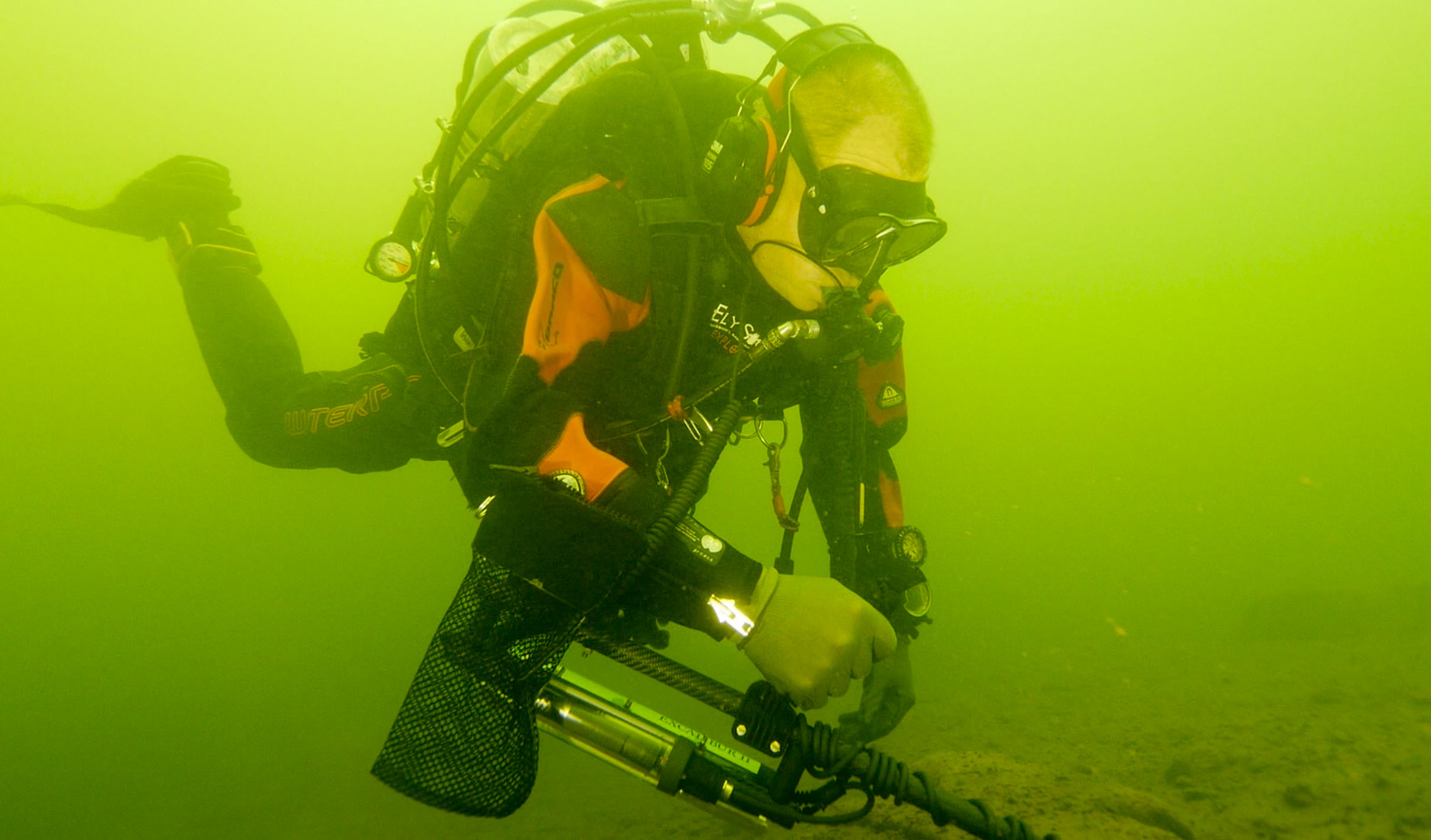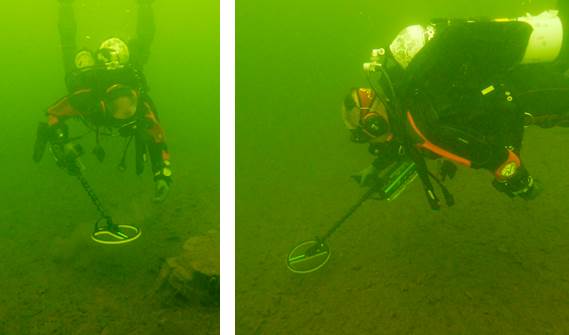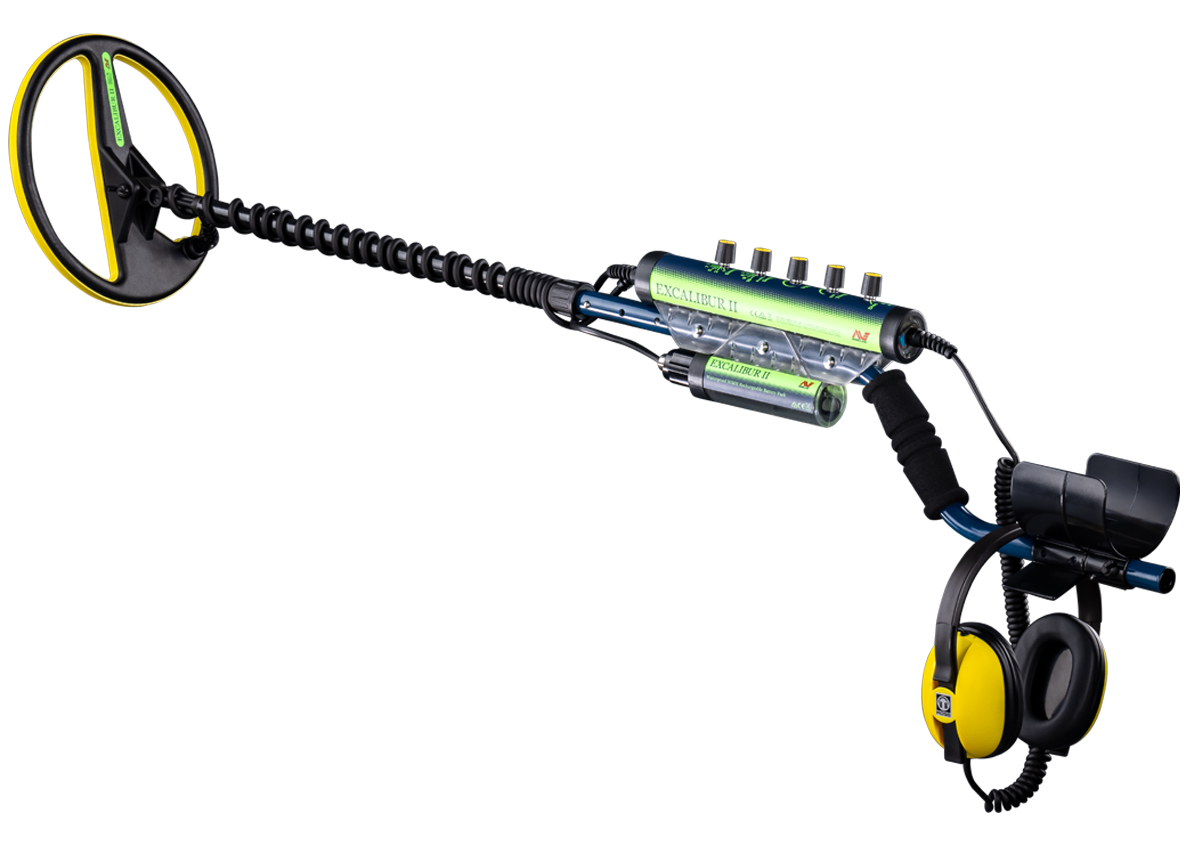Minelab’s Excalibur II metal detector is indisputably one of the best beach and water hunting detectors on the market. However, from the beginning this detector was designed for going underwater and finding treasure. Being a keen SCUBA diver I couldn’t wait to take my Excalibur II for a dive when I bought it, and it didn’t disappoint!

But, before I get into settings and techniques, a little bit about safety first.
Naturally if you are planning on getting into this side of detecting you need to have completed a SCUBA diving course. Diving can be dangerous if you are not paying attention to what you are doing and using a detector while diving adds task loading to the situation. I personally have 20 years and over 1000 logged dives of experience under my belt. So before jumping into the water in search of lost treasure, make sure you are confident and competent in your diving ability. I dive solo most of the time when detecting, however I am certified in solo diving, carry a completely redundant air supply and only ever enter the water when I have someone on shore present or if I am diving with a friend.

One of the benefits of using the Excalibur II on SCUBA is that you have access to those areas at swimming sites that are just out of reach of treasure hunters who wade in the water. One of my favorite sites is a popular swimming area that has been in use for nearly a century, where the deeper areas are in 3-4m of water. These sorts of areas have a lot to offer in the way of lost coins and jewelry, but are often also littered with undesirable metal targets such as bottle caps and fishing gear. This is where using an underwater detector with good discrimination abilities pays off in not wasting time and air on digging unwanted targets.
Searching for treasures underwater is quite different to detecting on land, sweep speeds are much slower due to the drag from the water, and recovery requires different techniques, such as fanning the sand away with your hand or I sometimes use a stainless trowel. On a deep target it can take several minutes to fan away the overburden to recover the target. In areas with dense silt, visibility can drop very quickly as you stir up the sediment. In these instances grabbing handfuls of sediment and passing each handful under the coil until the target is in your hand, then placing that handful into a fine mesh bag is the best way to recover items.
When diving, I alter my settings from those I use on land, with the main one being Volume. This I turn up near full, mainly to overcome the noise of my breathing, particularly exhaling which is noisy as the air bubbles leave the regulator and could cover the sound of a deep target. If the area I am searching has an abundance of bottle caps or the like I will reduce the Sensitivity down to 3-4, otherwise I leave it set at around 7. Threshold, just until I can hear it and I always work with the minimum amount of Discrimination.

As you can see detecting on SCUBA requires a different approach to on land but once you try it, it opens up a whole new world of opportunities and fun.
In Part 2, I’ll talk about one of my most memorable dives and what I discovered.
You can see more about my detecting adventures on my YouTube channel “Westcoast Mark”http://www.youtube.com/user/Thedeepbluediver and my own bloghttp://westcoastmark.wordpress.com/





















Comments
To make comments you must be logged in, please note comments will not display immediately due to moderation